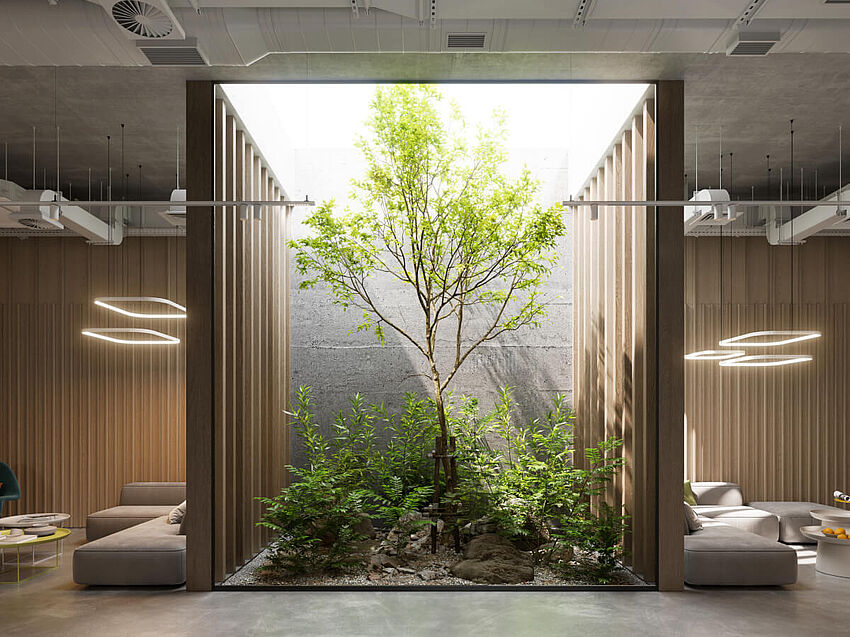For decades, the AEC industry has operated in a highly complex, fragmented, and project-based manner. Each construction project is typically planned from scratch, developed according to unique specifications, and rarely repeated. The value chain is local and highly fragmented both vertically and horizontally, with numerous stakeholders involved at every step, leading to interface frictions and inefficiencies. The industry has also been slow to adopt end-to-end digital tools, favoring a capital-light approach that limits innovation. Coupled with diminishing human resources and expertise, these challenges create delays, cost overruns, and misalignment between design and execution.
However, the AEC landscape as we know it is rapidly changing in 2025. New trends and technologies are reshaping the way buildings are designed, built, and managed. Below, we explore the key trends driving this transformation – and how they are changing the future of AEC from disjointed and inefficient to connected, digital-first, and data-driven.
Industry Disruptors: What’s Changing in AEC?
Sustainability Becomes a Design KPI
Sustainability is no longer an afterthought – it’s a design necessity. Governments and clients are demanding carbon-conscious construction, forcing architects to integrate embodied and operational carbon assessments from the start.
Germany, for example, has set a 68% emissions reduction target for buildings by 2030, reflecting a global push toward greener infrastructure. As a result, design software must evolve to include real-time sustainability metrics, allowing architects to track carbon impact as a key performance indicator (KPI) throughout the design process.
Architects and Engineers Are Wearing More Hats
Regulations, compliance, and evolving project demands are stretching design professionals thin. Architects and engineers are expected to take on more responsibilities, from energy efficiency compliance to risk assessment – all while managing complex design workflows.
A RIBA survey in 2021 found that 40% of UK large and medium-sized architecture firms are struggling with staffing shortages, making efficiency more critical than ever. To keep up, future software must enhance workflows, automate compliance checks, and simplify reporting, reducing the administrative burden on already overworked professionals.
Modular and Prefabricated Construction Goes Mainstream
The shift from traditional construction to modular, prefabricated methods is accelerating. A combination of labor shortages, rising costs, and technological advancements is driving the adoption of DfMA (Design for Manufacturing and Assembly), allowing for faster, more efficient builds.
With a 10% growth rate projected for DfMA from 2024-2027, software must adapt to support standardized, prefabricated design modules. This means better tools for configuring modular components, ensuring seamless integration from design to construction in an increasingly industrialized workflow.
Digital Twins Take Over the Design Lifecycle
Growth in the digital twin market shows the industry’s demand for real-time digital documentation. Digital twins are shifting from futuristic concepts to must-have tools, offering a continuous data loop throughout a building’s lifecycle.
From early-stage design to facility management and demolition, these virtual models improve decision-making and reduce costly errors. The next evolution of software must focus on seamless model integration, ensuring data flows smoothly from design through operations.
More Stakeholders, More Complexity
As projects grow in scale, so does stakeholder involvement. Investment in infrastructure is increasing globally and megaprojects will contribute a growing proportion of GDP, increasing the need for tools that manage collaboration across diverse teams.
Software must enable real-time data sharing, improve multi-user workflows, and streamline large-scale project management. Seamless integration between platforms is no longer a luxury – it’s a requirement to reduce friction between designers, contractors, and owners in complex construction ecosystems.
Game-Changing Tech Transformations in AEC
Cloud-Powered Workflows Take Center Stage
As projects grow more complex, processing massive models locally is becoming impractical. Cloud computing is now essential, enabling architects and engineers to work on large-scale projects from anywhere.
Currently, many AEC professionals already access their data mostly via the cloud, a trend that will only increase. This shift means future workflows will rely entirely on cloud-based processing, particularly for demanding tasks like real-time rendering, structural analysis, and large-scale collaboration.
Immersive Design is the New Standard
The demand for better, more interactive user experiences is reshaping design workflows. With the global AR market in construction expected to grow significantly this decade, many clients now expect to walk through projects virtually before a single brick is laid.
Next-generation design tools must offer seamless AR/VR integration, allowing for real-time model exploration and scenario testing. As digital natives enter the industry, flawless UX will be essential, influencing software adoption and client satisfaction.
AI is Supercharging Design Processes
AI is no longer just an experiment in AEC – it’s becoming a core part of the design process. Generative AI is set to revolutionize workflows, with the construction industry projected to realize substantial AI-driven value.
From automating repetitive tasks to predicting project risks, AI-driven software will dramatically reduce iteration time, turning weeks of work into hours. Expect AI to play a major role in concept development, material selection, and even real-time structural optimization.
The Future of Construction: From Fragmentation to Integration
The construction industry is undergoing a once-in-a-generation transformation. What was once a fragmented, manual, and inefficient process is becoming smarter, faster, and more connected. The trends shaping 2025 – AI-driven automation, digital twins, modular construction, and cloud-based workflows – aren’t just innovations; they are completely reshaping the DNA of AEC.
Gone are the days of starting from scratch for every project. Prefabrication and DfMA are introducing repeatable, scalable solutions that reduce waste and improve efficiency. AI is eliminating weeks of manual work, while digital twins are bridging the gap between design and execution, ensuring projects stay on track. Cloud technology is making real-time collaboration the new standard, reducing costly miscommunications. The AEC industry is no longer just about constructing buildings, it’s about building smarter.
The future isn’t coming – it’s already here. The only question is: are you ready to build in it?




